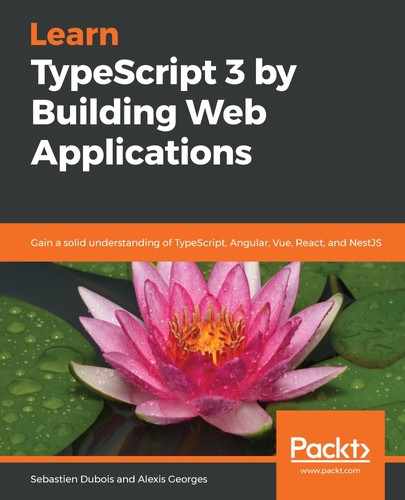In this chapter, we have continued our exploration of modern web frameworks with Vue.js. We hope that you're enjoying the trip as much as we are!
We have seen that Vue.js has many similarities with Angular, but is also much lighter than its larger cousin. Vue has its own merits, and clearly its learning curve is not as steep as Angular's.
We have actually covered a good portion of the basic features of Vue, which should have given you a decent overview of its capabilities.
We hope you have appreciated how simple it was for us to use TypeScript with Vue.js and its surrounding libraries. Overall, the level of support for TypeScript is quite good already, and the next few iterations of Vue.js will keep on improving the situation. There's no doubt about it: TypeScript is gaining in popularity and is here to stay.
In this chapter, we have also discussed state management. We have covered the main concepts of Redux (for example, the one-way data flow) and seen how VueX works and how close it is to Redux.
We've also learned about symbols, which are very useful if we want to get truly unique immutable references. We also looked at how we can leverage them with InversifyJS to integrate better dependency injection support into Vue.js applications! This is very useful to know about since the DI support for Vue is rather primitive at the moment. Using InversifyJS allows us to improve the quality of our code. As an added benefit, the same approach can actually be used with React as well.
In the next chapter, we will write a new application using Vue: LyricsFinder!
